In a Display of religious harmony, Istanbul’s ancient Greek Orthodox Church, Our Lady of Vefa, has become a symbol of unity, where Muslims and Christians gather together to seek blessings, exchange traditions, and offer prayers.
Religion is a practice of unity in diversity. This sacred space, hidden behind high walls in the historic heart of the city, offers a unique monthly ritual on the first day of each month, attracting believers from various faiths who come with hope and belief.
As Istanbul’s religious landscape has shifted over centuries, this church remains a poignant reminder of the city’s rich multicultural history. On these special monthly gatherings, the 200-meter-long queue outside the church is a mixture of both Christians and Muslims, cheerfully awaiting their turn to enter the sacred space.
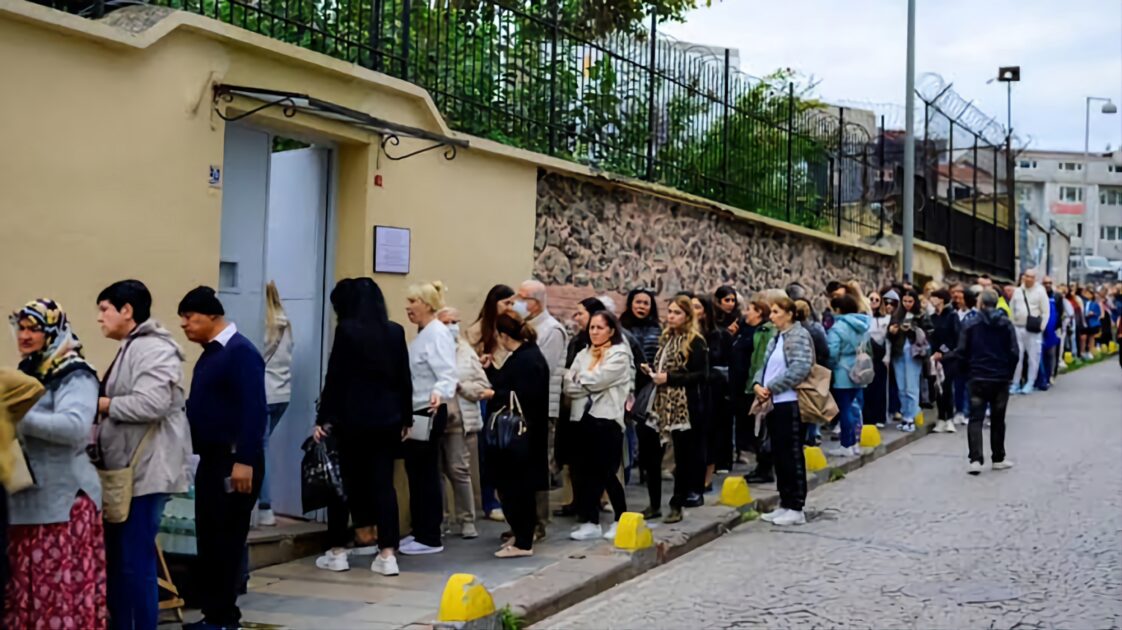
They come to make wishes, drink from the holy water spring, and partake in the church’s blessing ceremony led by a priest.
At the heart of this shared experience is a deep-rooted belief in the power of the sacred spring beneath the church. For many, it is not only a place of worship but a wellspring of hope, where they can seek solace and healing.
Emine Sanli, a Muslim woman who was cured of a physical ailment after drinking from the spring, is one of the many who attribute their healing to this sacred site. Sanli says,
“We came before with friends, and every one of our wishes came true!”
This convergence of faith traditions exemplifies the spirit of unity that permeates the gathering. Visitors purchase small tokens such as keys, each representing a different wish, health, prosperity, fertility, love, and more. Sweets, a symbol of gratitude in Muslim culture, are distributed by individuals who believe their prayers were answered.
A Georgian tourist, Tamar Khurtsidze, a frequent visitor, follows this custom, offering sweets to those waiting in line. She explains, “When wishes are coming true, you have to come and give sweets to the people.” Such gestures reinforce the shared sense of purpose and respect for one another’s faith.
A Space of Religious Coexistence
Inside the church, despite the varied religious practices, there is a mutual reverence. Whether it’s Christians crossing themselves or Muslims praying with their hands raised, the church accommodates all forms of worship. At the underground chapel, visitors collect water from marble taps, a significant ritual for many who believe in the spring’s healing powers.
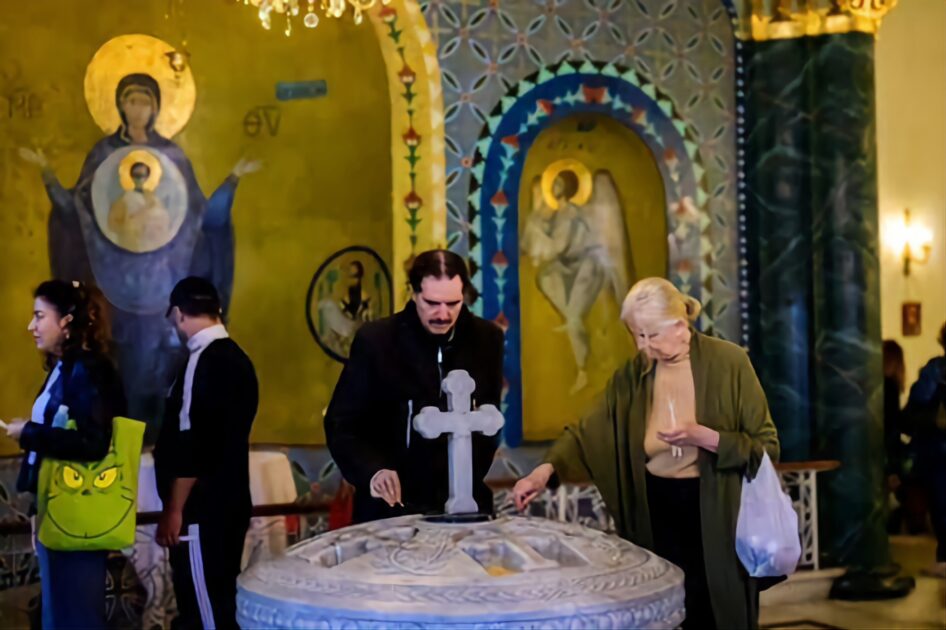
Father Hieronymos Sotirelis, a representative of the Ecumenical Patriarchate of Constantinople, describes the phenomenon as transcending religious boundaries.
“The presence of pilgrims from different backgrounds shows that we can truly coexist despite, or even because of our cultural, linguistic, religious, and ideological differences,” he says.
Istanbul’s Our Lady of Vefa church stands in contrast to the city’s evolving religious landscape, where many churches have been repurposed as mosques, such as the renowned Hagia Sophia.
Once the cultural and spiritual epicenter of the Byzantine Empire, Istanbul has seen its Christian population dwindle to just 0.2 percent of Turkey’s 85 million residents, a drastic shift attributed to events such as the Armenian genocide, population exchanges, and various ethnic conflicts.
The shared sacred space of Our Lady of Vefa harks back to Istanbul’s Ottoman heritage, a period where multiculturalism flourished, and different faiths often worshipped in close quarters.
Karen Barkey, a sociologist and expert on religion at Bard College, explains that such shared sites around the Mediterranean, including churches, synagogues, and mosques, are remnants of a time when empires brought together diverse peoples and traditions.
However, Barkey also notes that modern Turkey struggles with religious coexistence, as nationalism and religious homogeneity have taken hold. She points to the increasing dominance of a Sunni orthodox ideology that marginalizes minority groups like Christians and Alevi Muslims, whose rites differ from mainstream Islam. Despite this shift, Our Lady of Vefa remains an outlier, a place where such boundaries fade away in the collective pursuit of faith.
Unity in Diversity
For many visitors, like 50-year-old fashion designer Serkan Esen, the experience at Our Lady of Vefa offers a much-needed reminder of humanity’s shared spiritual heritage.
“I’m a Muslim, but I believe in all religions, so I visit all places of worship,” says Esen.
His sentiment is echoed by the crowd that gathers monthly, creating an environment where people from different backgrounds come together to celebrate their shared belief in something greater.
As global tensions surrounding religion continue to rise, the scene at Our Lady of Vefa offers a hopeful glimpse into a world where differences are embraced and sacred spaces are shared. It’s a testament to the enduring power of faith to bring people together, regardless of the divisions that may exist in society.
In the words of Aysun Zirhli, another Muslim attendee,
“We can all have different religions, but we’re all children of God.”


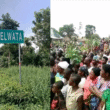

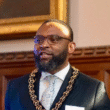
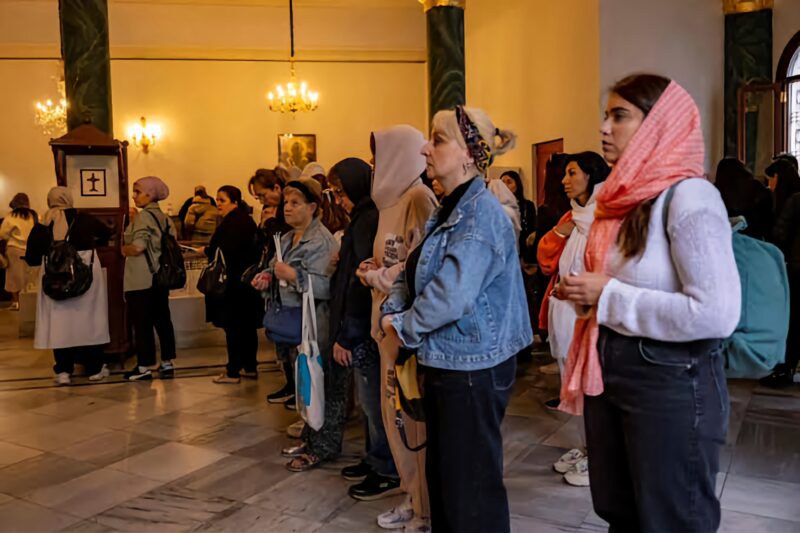

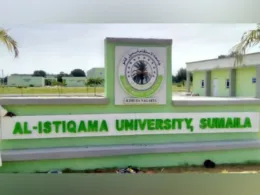


Join our Channel...